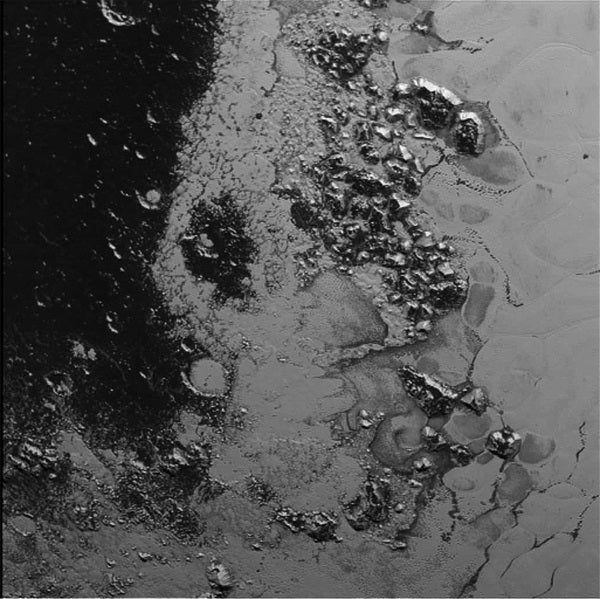Pluto’s icy mountains have company. NASA’s New Horizons mission has discovered a new, apparently less lofty mountain range on the lower-left edge of Pluto’s best-known feature, the bright heart-shaped region named Tombaugh Regio (Tombaugh Region).
These newly discovered frozen peaks are estimated to be 0.5 mile to 1 mile (1 to 1.5km) high, about the same height as the United States’ Appalachian Mountains. The Norgay Montes (Norgay Mountains) discovered by New Horizons on July 15 more closely approximate the height of the taller Rocky Mountains.
The new range is just west of the region within Pluto’s heart called Sputnik Planum (Sputnik Plain). The peaks lie some 68 miles (110km) northwest of Norgay Montes.
This newest image further illustrates the remarkably well-defined topography along the western edge of Tombaugh Regio.
“There is a pronounced difference in texture between the younger frozen plains to the east and the dark heavily-cratered terrain to the west,” said Jeff Moore, leader of the New Horizons Geology, Geophysics, and Imaging Team (GGI) at NASA’s Ames Research Center in Moffett Field, California. “There’s a complex interaction going on between the bright and the dark materials that we’re still trying to understand.”
While Sputnik Planum is believed to be relatively young in geological terms — perhaps less than 100 million years old — the darker region probably dates back billions of years. Moore notes that the bright, sediment-like material appears to be filling in old craters (for example, the bright circular feature to the lower left of center).










